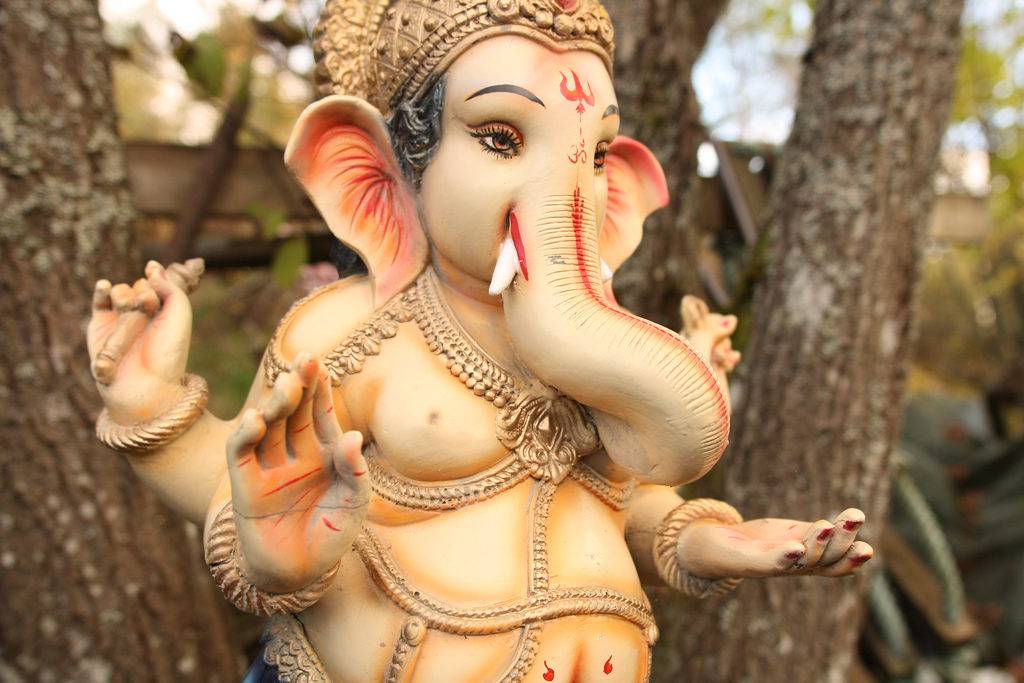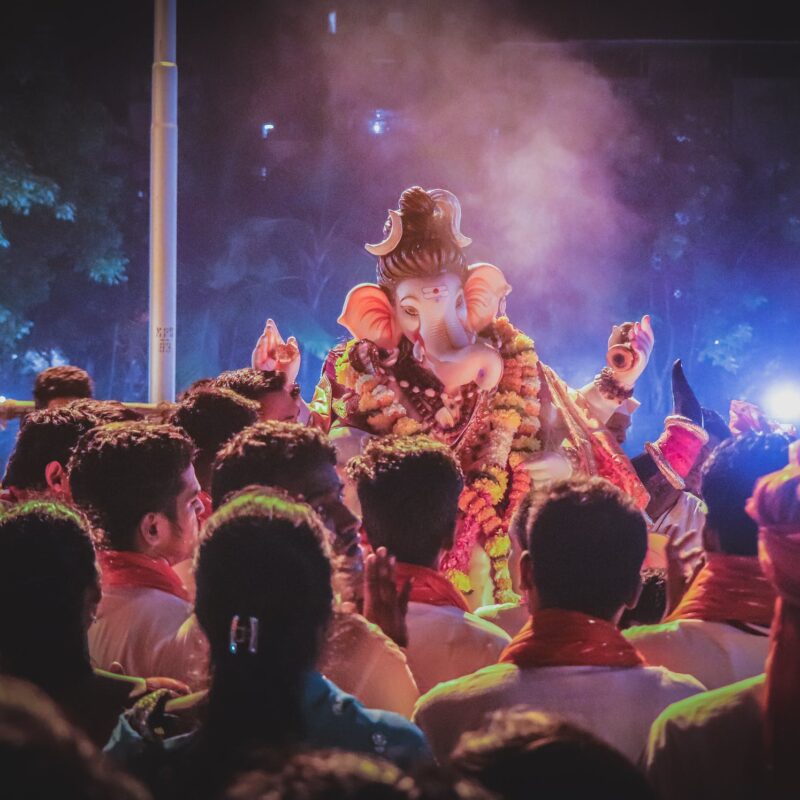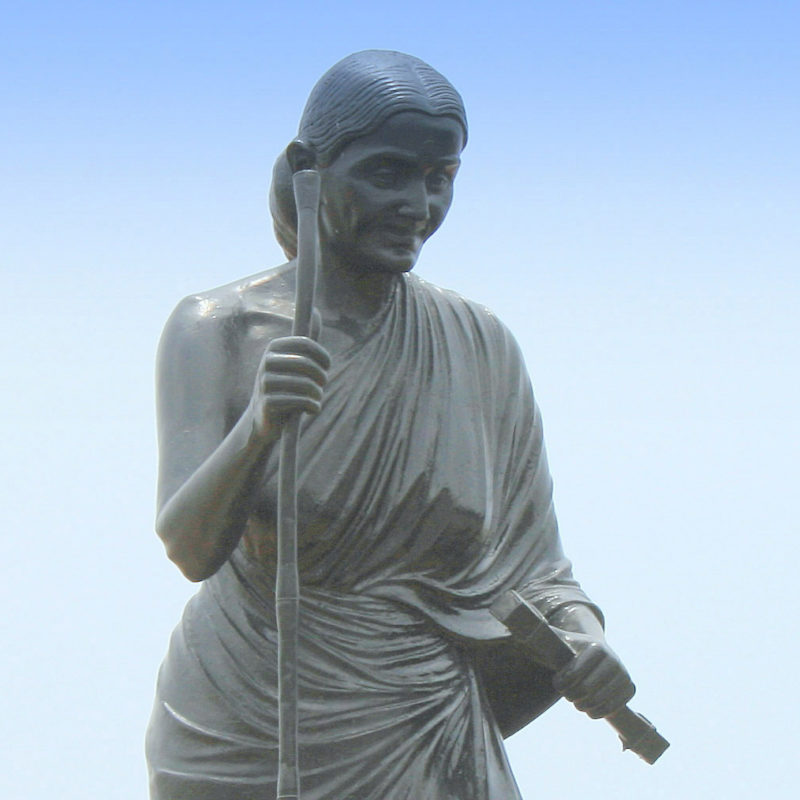
1) He’s known as the remover of obstacles
The universe is a cosmic machine, according to Hindu texts, and the various Gods described in the Vedas are likened to administrators of said machine. Each deity either represents or is in charge of some aspect of life.
Ganesha is prominently known as the remover of obstacles. Because of this, many Hindus worship him before any major endeavor they undertake – be it business, marriage, childbirth, etc. More importantly, however, he also removes obstacles on the soul’s spiritual journey and, is therefore, prayed to by aspiring transcendentalists all over the world.
In addition, Ganesha is also known as the guardian of esoteric knowledge. It is no surprise, therefore, that he is considered the presiding deity of astrology. Practitioners of the Vedic science pray to him, believing he has an intimate understanding of how the planets affect the karma and destiny of each soul.
Ganesha’s mercy is regularly invoked by those who chant the mantra, om gam ganapataye namaha, which means: “I offer my obeisances to Ganesha, the remover of obstacles.” Furthermore he is celebrated every year with a 10-day festival called Ganesha Chaturthi, in honor of his birthday.
2) He’s the son of Shiva and Parvati
One of the most broadly worshipped and endearing figures in Vedic culture, Ganesha is most widely recognized, perhaps, for having the head of an elephant.
In the book “Ganesha: The Auspicious…The Beginning,” Shakunthala Jagannathan and Nanditha Krishna explain there are different stories in Hindu texts regarding the origin of Ganesha that appear to be contradictory.
In one story, the devas (gods) approached Shiva for help because they were being harassed by the demons. Shiva consented by producing from his mind a glowing child with the head of an elephant and a trident in one hand. From that point forward, Ganesha became known as the mind-born son of Shiva who would protect the devas. Shiva’s wife Parvati then placed him on her lap and said that any endeavor, whether human or divine, could only be successful after praying to Ganesha. Shiva then appointed Ganesha as leader of the ganas (celestial hordes).
In an altered version of this story, when Shiva created Ganesha, Parvati, who was bothered to have had no contribution to his creation, willed Ganesha’s head to be turned into that of an elephant’s. After seeing the elephant-headed child, Parvati felt great love for him, and then said no endeavor would succeed without a prayer to the boy.
The most widely known account of Ganesha’s birth centers around a particular time Parvati decided to take a bath. While Shiva was away meditating, Parvati removed a layer of oil and dust from her body, which she shaped into the figure of a young boy. She brought the boy to life and, after telling him he was her son, instructed him to stand guard while she went in to take a bath. When Shiva returned, Ganesha blocked his path, not allowing him to see Parvati. Unaware Ganesh was his son, Shiva became furious and fought the boy before eventually cutting off his head. After discovering what had transpired, Parvati became so sad, she threatened to destroy the heavens and earth. Shiva then pacified Parvati by instructing the ganas to go out and bring the head of the first living being they could find with it’s head pointed towards the north, known as the auspicious direction associated with wisdom. The ganas returned with the head of an elephant, which Shiva placed on the trunk of Ganesha, bringing him back to life. Many view Ganesha’s decapitation as a symbol of transformation one must undergo to progress on the path of spirituality.
Though seemingly contradictory, the multiple origin stories sometimes attached to various figures in Hinduism often act as a way to highlight particular moral lessons. Numerous depictions also help in conveying Hinduism’s diversity, openness and pluralistic nature.
3) He’s renowned for his wisdom and intelligence
Ganesha and his brother Kartikeya were once in competition to see who could circumambulate the earth quickest. As Kartikeya promptly flew off in a hurry, Ganesha devotedly circled his parents instead. Because Lord Shiva and Parvati are considered to be the very center of creation, Ganesha was deemed the winner. Not only was he wise enough to understand the position his parents held in the universe, but he also demonstrated an important lesson taught throughout Hinduism: that a person should give deep reverence and honor to his or her parents, for without parents, nobody can be created.
4) He transcribed the Mahabharata
When Vyasadeva was first inspired to author the Indian epic The Mahabharata, he asked Ganesha, who is famous for having a sharp memory and subtle intellect, to be his scribe. Ganesha agreed but did so under one condition: that Vyasadeva dictate the entire account without stopping even once. Vyasadeva consented, but not before posing his own condition: that Ganesha could write down a stanza only after fully comprehending its essence. Ganesha accepted and proceeded to break off his own tusk to use as a pen. Thus, whenever Vyasadeva wanted a break from narrating, he would give a particularly complex clause that would require Ganesha to pause in order to fully understand its meaning.
5) His form and sacred symbols all have deeper meanings
The gods described in Hinduism are considered great personalities, not only because they are empowered and full of mystical potency, according to the Vedas, but also because of their ability to inspire, through merely their presence, the importance of cultivating one’s spiritual life. As a result, each deity’s form and accompanying items can be meditated on as symbols of various spiritual truths. Many see the union of Ganesha’s body and elephant head as a representation of how the spirit should live in harmony with nature. His large elephant head is also an embodiment of wisdom and understanding. His round belly can be seen as the cosmos, while the snake around his waist is the energy that holds the cosmos together. The mouse he rides is like the wandering mind that can be controlled under the weight of knowledge. He has four hands – one with an axe to cut off attachments, one with a rope to pull a person towards the highest goal, one with a sweet to reward those who live a life of spiritual discipline, and one held with the palm out to give blessings and protect those on the path of spirituality.








































